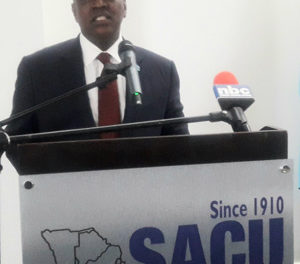
Strong currency hits manufacturers
Local manufacturers have been affected by a stronger Namibian dollar with most experiencing lower production and lower demand for their products, a manufacturing survey has shown.
According to the survey released by Simonis Storm Securities this week, the volume of production over the past quarter declined, with the net number of respondents experiencing increased volumes dropping to 7% from 38% in the fourth quarter last year and 20% a year ago.
Total order book levels turned negative, with a net -20% of respondents experiencing lower than normal total order book levels. Export order books remained well below normal levels at -15%, however it improved from -23% in the previous quarter.
“This reflects weak foreign demand on the back of a slightly stronger currency and weaker economic conditions.
“The lower order book levels and worse general business conditions are most likely due to a stronger exchange rate, as well as petrol price increases which weighs on the transport costs of businesses,” researcher, Rudolf Kuschke said.
The Namibian Dollar strengthened by about 5% against the US Dollar and by about 2.3% against the Euro in the first quarter of this year. A stronger exchange rate affects exports while making US Dollar manufacturers such as Angola more competitive in the local market.
Stock levels of finished goods decreased slightly, with 4% of respondents experiencing below normal levels. Kuschke said this was more likely a result of lower production volumes as opposed to stronger demand, given the deterioration in the total order book.
The employment outlook also deteriorated substantially, which according to Kuschke, is in line with the more muted revenue growth expectations on the back of slower production volumes and price increases. Net 4% of respondents expected to employ less people in the coming quarter – the first time that a negative reading was recorded and a sign that manufacturers are focused on cost containment.
The outlook for the general business condition in the next six months worsened slightly, although still positive. Net 37% of respondents see their situation improving over six months, compared to 42% the previous quarter
Competitive imports remained the biggest factor limiting manufacturers to increase production volumes. This factor was mentioned by 57% of food manufacturers and by 60% of chemical manufacturers.
A net 44% of respondents indicated shortage of skilled labour remains one of the biggest constraints. In the “basic metals and fabricated metal products” category 75% of respondents mentioned this factor and 60% in the chemicals category.












































